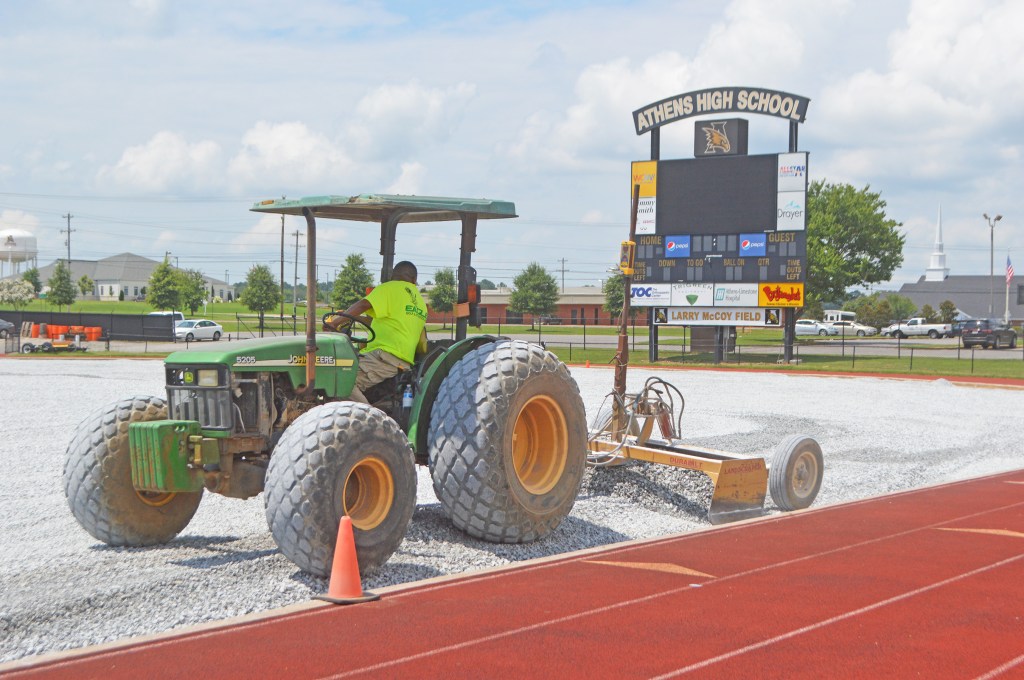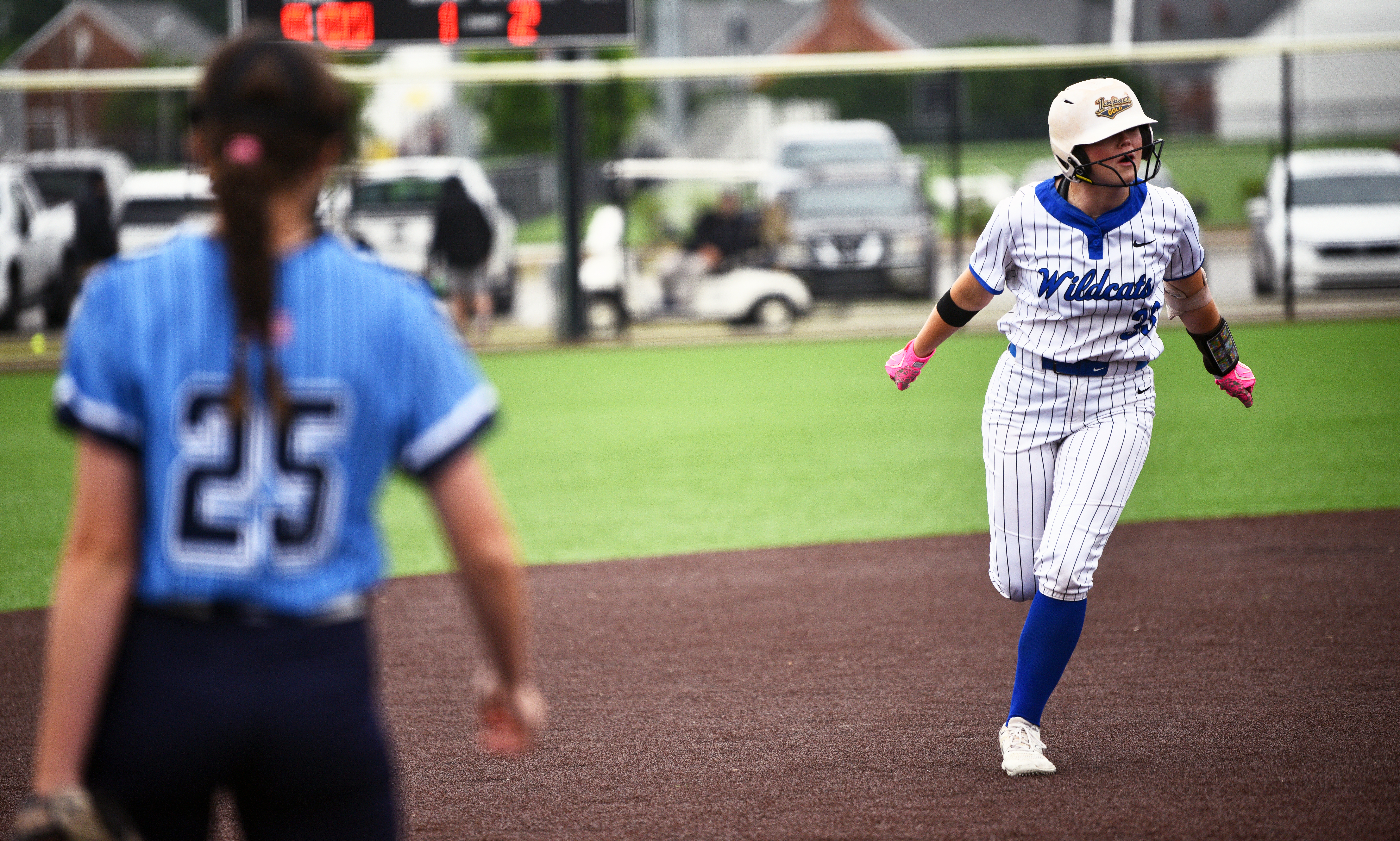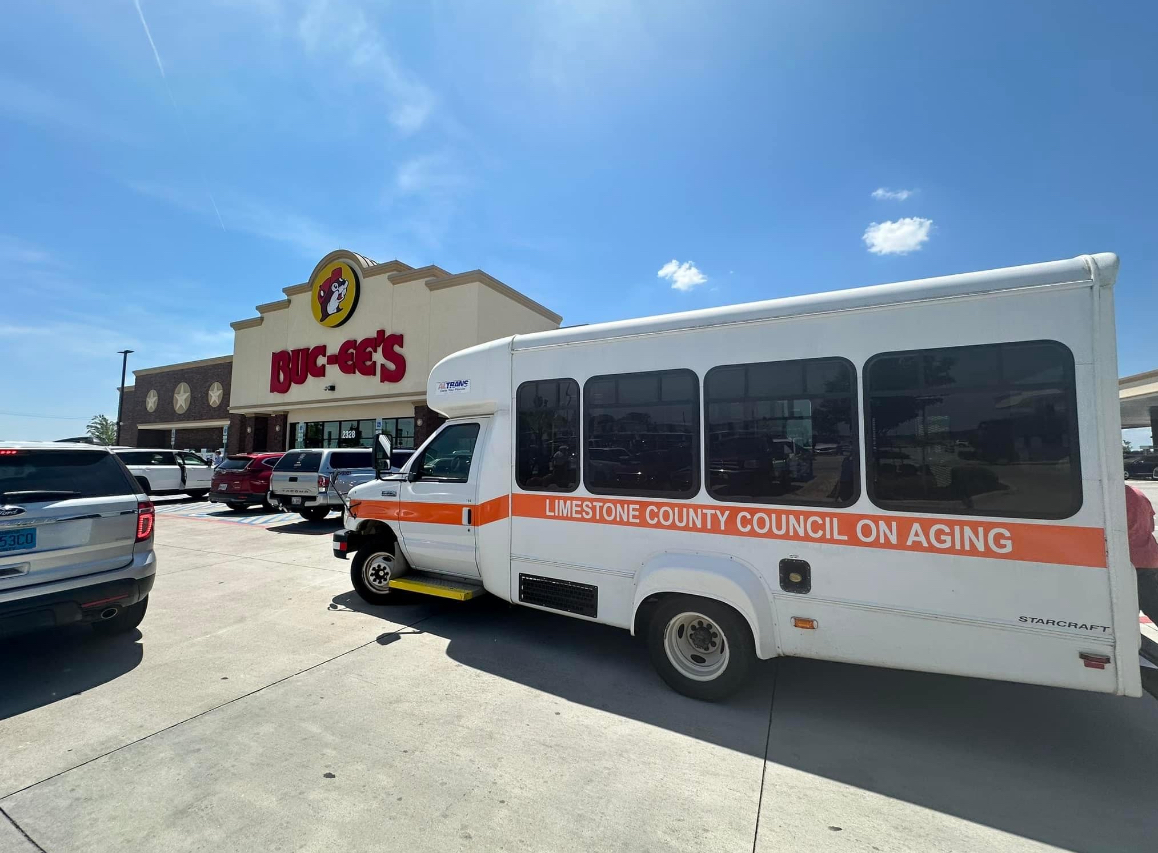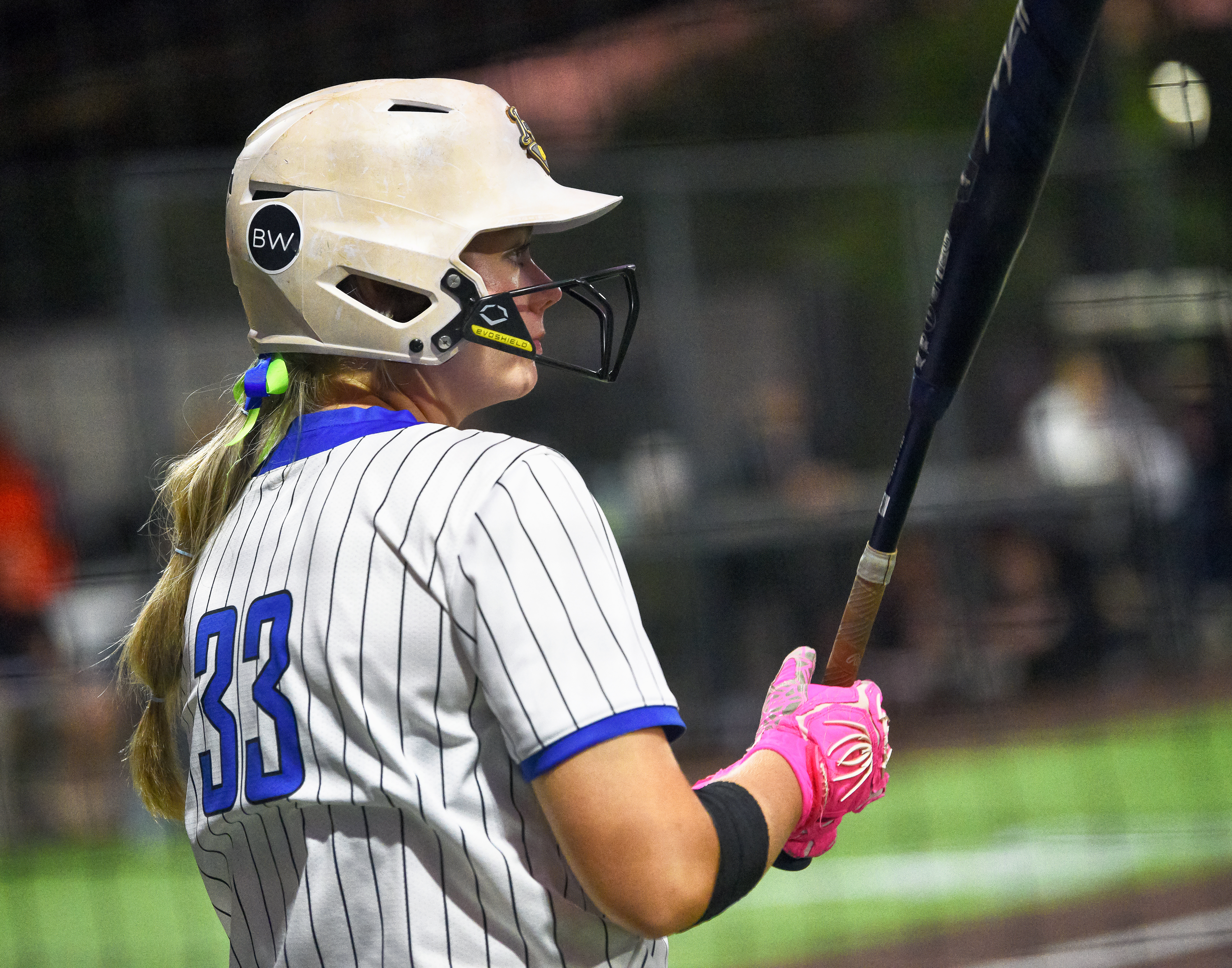Artificial turf could lead to fewer injuries
Published 6:00 am Friday, July 12, 2019

- A worker with Eagle Golf and Athletics smooths out gravel at Athens Stadium Thursday afternoon. The gravel is the first layer in the installation of artificial turf at the stadium.
Artificial turf might have a bad reputation among people who remember a slew of torn ACLs and broken ankles on what amounted to little more than carpet laid over concrete.
But artificial turf technology over the last 20 years has seen the amount of sports injuries on artificial decrease to a level one would see on a natural grass surface.
Some sports medicine professionals say the current artificial turf can even lead to fewer injuries than fields with natural grass.
That is what David Sellers, regional athletic coordinator for Drayer Physical Therapy, said is his experience.
Sellers said he is looking forward to Athens High School’s new artificial turf stadium. The stadium previously had natural grass, but drainage issues led to the school having the grass pulled up and replaced with an artificial surface.
It is expected to be ready for Athens’ first home game Aug. 30.
“The turf is going to be a big help,” Sellers said. “Technology has come a long way. The old artificial turf was bad, but the stuff they are using now is in a lot of ways superior to grass.”
The turf setup consists of different products for drainage, a couple of different base layers, a pad layer and the turf itself, which has tiny foam and rubber beads in it for added softness.
“It’s like playing on a 6-inch thick rubber mat,” Sellers said. “It looks solid, but when you get slammed down on top of it, it’s more like a trampoline. It looks like grass, it acts like grass, but it’s actually 6 inches of rubber. Like those rubber pads you see underneath playground equipment.”
Sellers has experience with artificial turf, having worked in LaGrange, Georgia, at a school that had an artificial turf football field.
“It actually reduced some of the injuries,” Sellers said. “The playing surface is always smooth. With grass, you can have divots and holes for the sprinkler system, and you don’t have that now.”
One big complaint of the old AstroTurf was that it was dangerous to cut or twist on. A player would try to cut or twist quickly, and his or her shoe would stick in the turf, leading to a knee or ankle injury.
New artificial surfaces with rubber infill have mostly put an end to that.
“The (artificial) turf is always going to give as you plant and pivot with cleats on,” Sellers said. “When you plant those cleats in those rubber pellets, they will twist in that turf. In grass, your cleat might catch on a root, so when you plant to cut, your foot stays still, and that is one of the reason you get ACL injuries.”
Also, with the old AstroTurf, players had to wear different types of shoes. With the current artificial surface, players can wear exactly the same cleats they would wear on natural grass, because the surfaces are so similar.
Sellers said the major issue with artificial turf is the heat. The rubber pellets cause the ground to be hotter than natural grass, so players and coaches will need to be aware of any heat-related illness during practices or games.
“We will be sure to keep a close eye on that, but we would do that anyway, as hot as it gets here,” Sellers said. “Another issue with this turf is that the pellets can sometimes get in players’ eyes, but that isn’t a big issue. They will wash right out with water.”
Sellers said he and the team at Drayer Physical Therapy are pleased to see Athens High installing artificial turf at its stadium.
“We are looking forward to having that turf at Athens,” he said. “It’s going to be a big help.”





